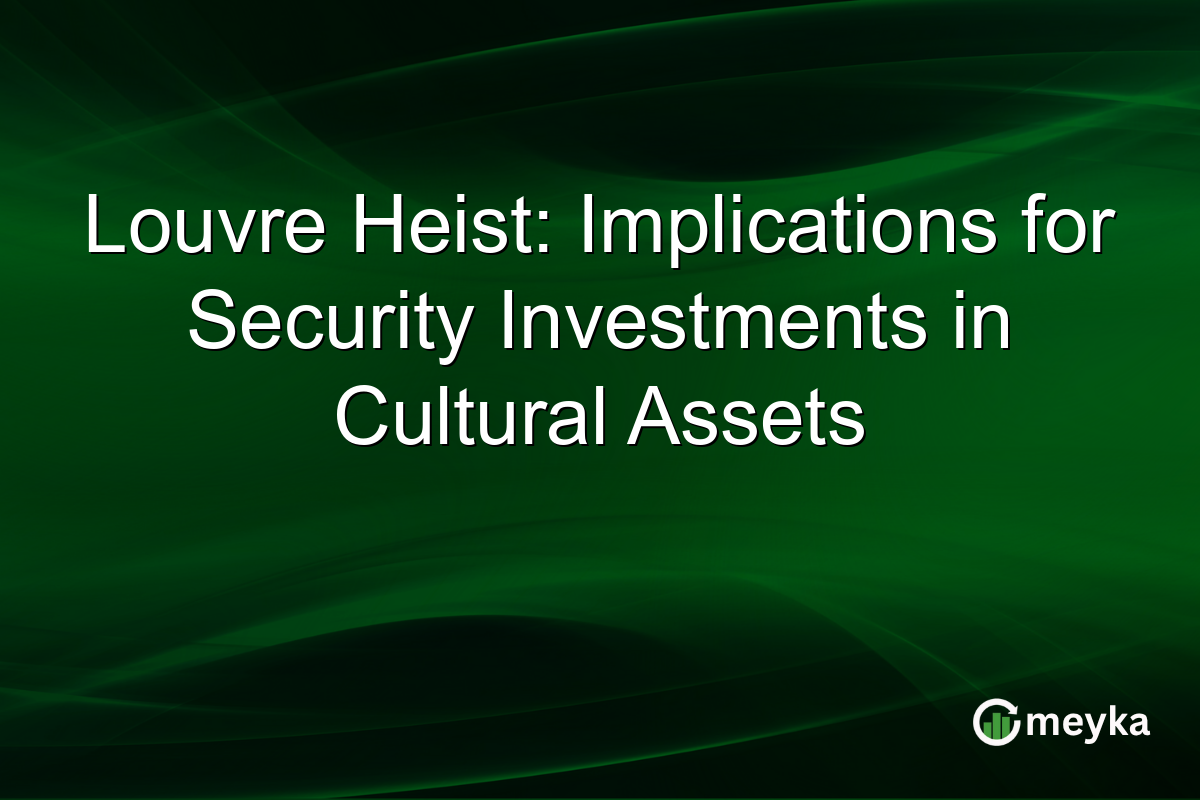Louvre Heist: Implications for Security Investments in Cultural Assets
The recent Louvre heist, where thieves made off with priceless art in just seven minutes, has shocked the world. This brazen theft from one of the world’s most secure museums underscores critical vulnerabilities in cultural asset protection. The incident has sparked a renewed focus on the effectiveness of museum security systems and the potential for investment in advanced security technologies.
The Heist and Its Immediate Impact
In a shocking turn of events, thieves successfully breached the Louvre’s extensive security systems within a mere seven-minute window. This high-profile heist has raised serious questions about the safeguarding of cultural treasures. Although museums are typically regarded as extremely secure, this incident revealed substantial flaws that need addressing. The immediacy and audacity of the crime have drawn significant media attention, emphasizing a gap in current security measures.
The Louvre heist has not only affected curators and art enthusiasts but has also drawn the attention of investors towards companies specializing in enhanced security solutions. As cultural institutions reassess their security measures, there is a growing market for cutting-edge technologies designed to protect valuable assets.
Evaluating Museum Security Systems
Museum security systems are typically advanced, incorporating features like alarm systems, motion detectors, and surveillance cameras. However, the Louvre incident highlights their limitations when faced with well-coordinated criminal operations. This has led to discussions about integrating more sophisticated technologies, such as AI-driven monitoring systems and smart sensors.
These developments point towards a significant investment opportunity in the security sector. Companies offering innovative solutions for real-time threat detection and data analytics stand to benefit as museums seek to upgrade their security protocols. This shows the potential market growth for cultural asset protection innovations.
Art Theft Impact Ripple Effects
The theft at the Louvre goes beyond immediate financial loss and touches on the broader implications of art theft. When cultural assets are stolen, it impacts cultural heritage, insurance costs, and public trust. The incident underscores the necessity for museums to enhance their security not just to protect assets but also to maintain their reputations and visitor confidence.
For investors, this represents a dual opportunity: contributing to cultural preservation while generating returns through investments in security technology companies. As cultural institutions increasingly seek financial backing to bolster their defenses, market demand for advanced security systems is likely to rise.
The Future of Cultural Asset Protection
Looking ahead, cultural institutions are expected to shift towards more integrated security solutions. This involves combining traditional security measures with emerging digital technologies, such as biometric scanners and blockchain for asset verification.
The Louvre heist has catalyzed discussions on how museums can protect their collections without compromising accessibility for the public. As the industry evolves, there is an opportunity for security tech companies to lead innovations in cultural asset protection, carving out a niche in this burgeoning market.
Final Thoughts
In conclusion, the Louvre heist has highlighted vulnerabilities in museum security systems and sparked investor interest in the security technology sector. This incident serves as a wake-up call for cultural institutions worldwide, emphasizing the importance of robust security measures. For investors, the growing demand for advanced security solutions offers significant opportunities for growth. As technology continues to evolve, the integration of new security innovations will be crucial in protecting cultural assets and preserving heritage for future generations.
FAQs
Museums frequently use a combination of surveillance cameras, alarm systems, motion detectors, and sometimes security personnel. However, incidents like the Louvre heist highlight the need for more advanced technologies such as AI and smart sensors for comprehensive protection.
Art theft affects museums beyond just financial implications. It results in cultural heritage loss, increased insurance premiums, and can diminish public trust. Ensuring robust security measures is essential to prevent these broader impacts.
Investors are paying attention to museum security technologies because of the growing demand for sophisticated security solutions. The recent Louvre heist underscores vulnerabilities, creating a market opportunity for companies providing advanced protection systems.
Disclaimer:
This is for information only, not financial advice. Always do your research.






